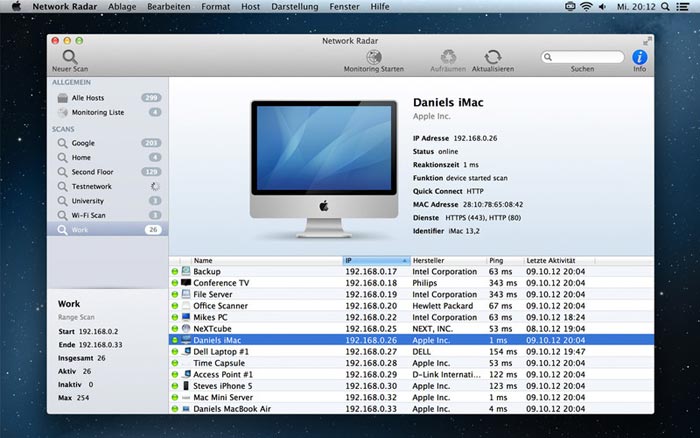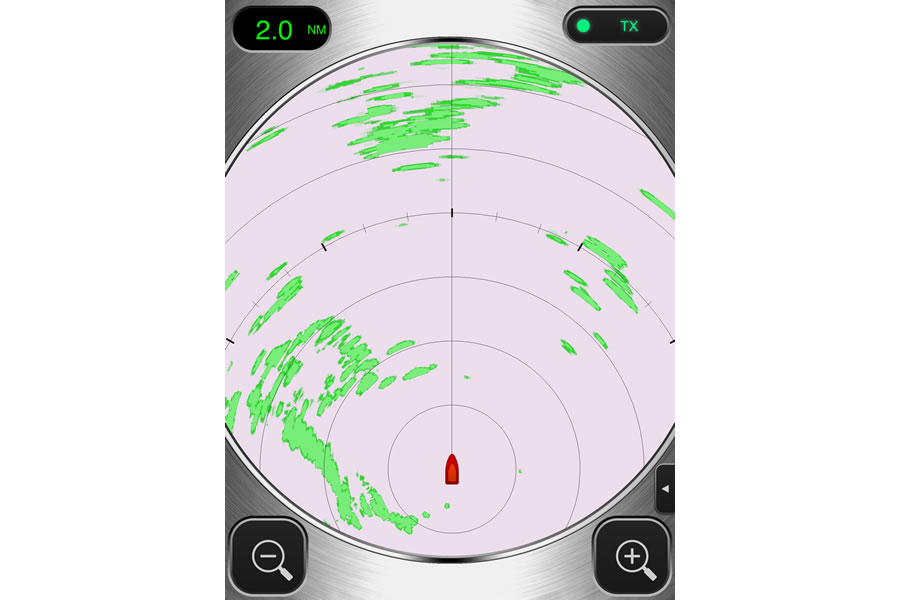

The Deep Space Network is also instrumental in carrying out its own science investigations. Currently, the list of spacecraft supported by the DSN includes NASA's Curiosity rover on Mars, the Spitzer Space Telescope, the Saturn explorer Cassini and the two Voyager spacecraft, which are more than 9.6 billion miles (15.5 billion kilometers) away from Earth.
#WIRELESS NETWORK RADAR DOWNLOAD#
In addition to allowing missions to upload and download data to and from dozens of spacecraft, the network helps navigators pinpoint spots for landings and conduct burns that place spacecraft into orbit around other planets, or fine-tune their trajectory. "Without the DSN, we would never have been able to undertake voyages to Mercury and Venus, visit asteroids and comets, we'd never have seen the stunning images of robots on Mars, or close-up views of the majestic rings of Saturn." and international robotic space missions," said DSN Project Manager Al Bhanji of NASA's Jet Propulsion Laboratory, Pasadena, Calif., which manages the Deep Space Network. "Today, the DSN supports a fleet of more than 30 U.S. The Deep Space Network has been used recently by India's first interplanetary probe, the Mars Orbiter Mission (MOM). Space agencies in Europe, Japan and Russia have all relied on the Deep Space Network when planning and communicating with their own missions over the decades. While some of the communication facilities have moved over the decades, today the three complexes, which operate 24/7/365, are located in Canberra, Australia Madrid, Spain and Goldstone, Calif. Three antenna complexes were established around the globe, spread out at roughly 120 degrees of longitude so that even as Earth rotated, spacecraft would always be above the horizon of at least one complex.

On December 24, 1963, the Deep Space Instrumentation Facility officially morphed into the Deep Space Network and quickly became the de facto network for any planned missions into deep space. Army in the 1950s and then later moved over to the jurisdiction of the newly created National Aeronautics and Space Administration (NASA).

The facility was originally operated by the U.S. What is now known as the Deep Space Network first existed as just a few small antennas called the Deep Space Instrumentation Facility. For example, what is the purpose of sending a spacecraft to Mars if we can't receive data, images and other vital information from that spacecraft? More information about the Deep Space Network is online at: įrom the very beginning of NASA's space program, it was clear that a simple, direct way to communicate with missions in deep space would be needed. The Deep Space Network has been so critical to so many missions over the decades, the network's team members like to use the phrase "Don't leave Earth without us." One giant leap for mankind" numerous encounters with the outer planets of our solar system images taken by rovers exploring Mars and the data confirming that NASA's Voyager spacecraft had finally entered interstellar space. The historic communiqués include "That's one small step for man. Over the past 50 years, antennas of the Deep Space Network (DSN) have communicated with just about every mission that has gone to the moon or beyond. 24: the 50th anniversary of its official creation. NASA's Deep Space Network, the world's largest and most powerful communications system for "talking to" spacecraft, will reach a milestone on Dec.


 0 kommentar(er)
0 kommentar(er)
